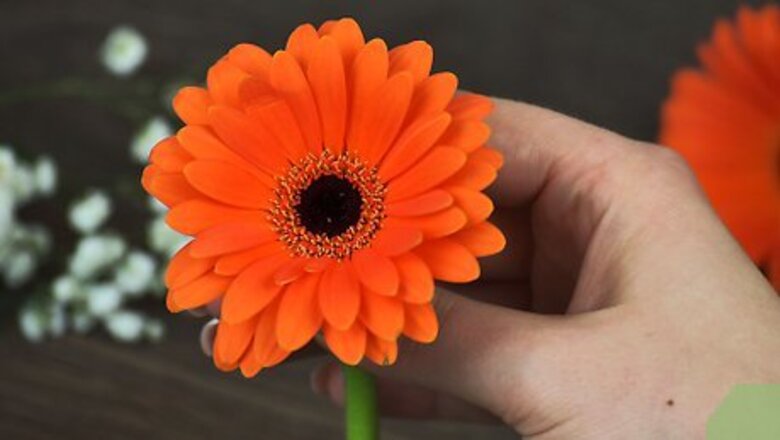
views
Getting the Flower Ready
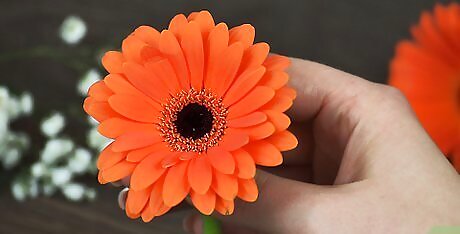
Choose a large flower for the middle of your boutonniere. You can pick any flower that you want for your boutonniere. Make sure the flower has a sturdy stem so your boutonniere doesn’t wilt. Pick a flower that’s the same color or a complementary color of your clothes. For example, if you were wearing a purple tie, choose a purple or yellow flower for your boutonniere. Use artificial flowers if you don't have access to fresh ones.Tip: The 4 most common flowers to use in boutonnieres are roses, carnations, calla lilies, and tulips.
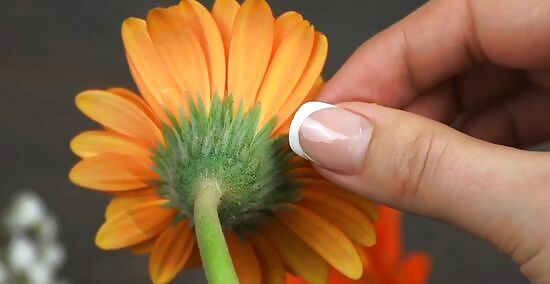
Remove any deformed petals around the outside of the flower. Pull out the 2-3 outer petals around the flower so it looks completely fresh. If there are any other damaged petals, take them out until you’re happy with the flower’s appearance. If you notice that you have to remove a lot of the petals, try to use a different flower. Your boutonniere will look less full when you take out too many petals.

Snip the stem 1 inch (2.5 cm) below the bud. Use a pair of garden snips to cut the stem off of the flower. Measure about 1 inch (2.5 cm) from the base of the flower and make your cut at a 45-degree angle. Dispose of the stem once it’s removed. Trim some of the leaves off of the stem before you throw it away if you want to use them as decoration in your boutonniere later on.
Wrapping the Stem
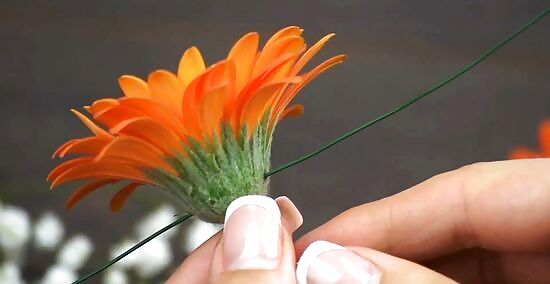
Stick an 8 in (20 cm) piece of floral wire through the base of the flower. Push one end of the wire right underneath the flower’s base. Make sure your wire is in the middle of the stem so your boutonniere stays balanced. Feed the wire through the other side of the stem until you have 4 inches (10 cm) on each side. If you’re using silk or other artificial flowers, heat the end of the wire with a candle or utility lighter. The hot wire will melt through the plastic to the other side. If you can’t find floral wire, any 22-24 gauge wire will work fine.
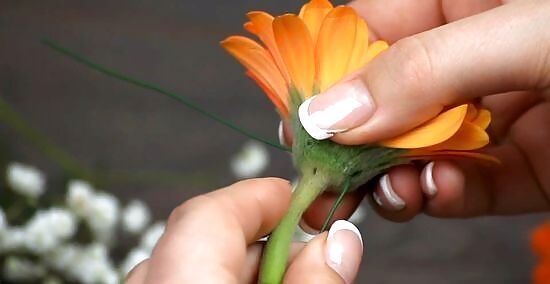
Fold the wire in half to create a fake stem. Point each side of the wire down and away from the flower. The wire makes a stem that you can bend and manipulate more easily. Make sure the wire is completely straight.Tip: You can bend the wire at slight angles to give a more rugged shape similar to a natural flower stem.
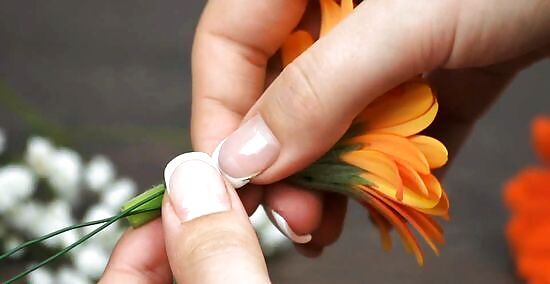
Wrap the wire tightly in floral tape. Place your tape just above where you put the wire through the stem. Hold the tape in one hand and use your other hand to slowly spin the flower. Pull the floral tape tight, and press it against the wire stem so it adheres. Continue wrapping tape around the wire until you reach the bottom. Floral tape can be purchased at your local arts and crafts store.
Adding Additional Greens and Decoration
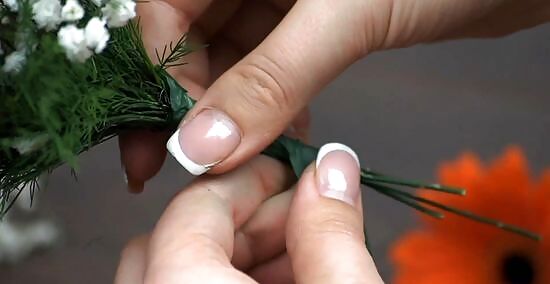
Group leafy filler plants around the base of the flower and tape them in place. Choose leaves that are flat, but not too large that they overwhelm your flower. Arrange the greenery around your flower so their stems extend down past the wire. When you have an arrangement that you like, wrap another layer of florist’s tape around the stems the same way as your wire. Plants to Use Holly has pointed leaves that will pop against any smooth flower petals. Plumosa is a type of fern with smaller leaves that will add a different texture to your greenery. Hypericum berries add a small pop of color and different shape to your boutonniere.
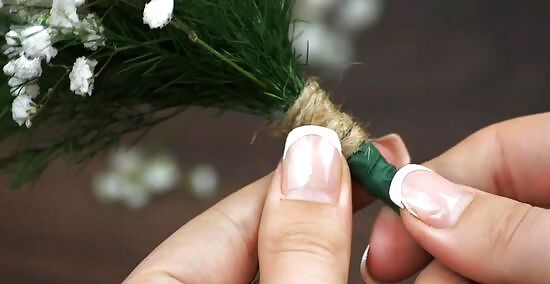
Tie ribbons around the stem to add more color to your boutonniere. Wrap the ribbon around your boutonniere the same way you wrapped the tape. Tuck each end of the ribbon into the wrap to hold it in place. If you want a more decorative look, leave one end of the ribbon hanging down and cut a small triangle out of the end to form a dovetail.

Trim the wire down to 2–3 in (5.1–7.6 cm). Use a strong pair of scissors to cut the boutonniere to a smaller size so it fits on your lapel easier. This also helps remove any long stems from your filler plant to make your boutonniere look cleaner. Curl the end of your boutonniere backward if you want to secure a ribbon even more.

















Comments
0 comment